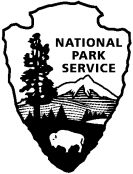1024-0224 Programmatic Submission Form - CUVA
1024-0224_CUVA_3-5-2015.docx
Programmatic Review and Clearance Process for NPS-Sponsored Public Surveys
1024-0224 Programmatic Submission Form - CUVA
OMB: 1024-0224
OMB
Control Number: 1024-0224
Current
Expiration Date: 8-31-XXXX
National Park Service U.S.
Department of the Interior


Programmatic
Review and Clearance Process
for
NPS-Sponsored Public Surveys


The scope of the Programmatic Review and Clearance Process for NPS-Sponsored Public Surveys is limited and will only include individual surveys of park visitors, potential park visitors, and residents of communities near parks. Use of the programmatic review will be limited to non-controversial surveys of park visitors, potential park visitors, and/or residents of communities near parks that are not likely to include topics of significant interest in the review process. Additionally, this process is limited to non-controversial information collections that do not attract attention to significant, sensitive, or political issues. Examples of significant, sensitive, or political issues include: seeking opinions regarding political figures; obtaining citizen feedback related to high-visibility or high-impact issues like the reintroduction of wolves in Yellowstone National Park, the delisting of specific Endangered Species, or drilling in the Arctic National Wildlife Refuge.
|
Submission Date: |
2/27/2015 |
|||||||
|
|||||||||
Project Title: Cuyahoga Valley National Park Visitor Use Study |
|||||||||
|
|||||||||
Abstract (not to exceed 150 words) |
|||||||||
The purpose of this project is to conduct a mail-back survey of visitors in Cuyahoga Valley National Park (CUVA). The survey instrument (see Attachment A – CUVA Survey Instrument) is designed to collect information about visitor use and user characteristics, visitor satisfaction with park services and facilities, and visitor spending in gateway communities. The survey will be conducted during the summer of 2015, and will be used to inform park planning and management, and improve interpretive operations to meet visitors’ needs and expectations. The survey will also provide information about impacts of visitor spending on local communities and feedback on local commercial services, and results will be shared with park partners and gateway communities to assist in mutual planning efforts. |
|||||||||
|
|||||||||
Principal Investigator Contact Information |
|||||||||
Name: |
Steve Lawson, PhD |
||||||||
Title: |
Director, Public Lands Planning and Management |
||||||||
Affiliation: |
Resource Systems Group, Inc. |
||||||||
Address: |
55 Railroad Row White River Junction, VT 05001 |
||||||||
Phone: |
802.295.4999 |
||||||||
Email: |
|||||||||
|
|||||||||
Park or Program Liaison Contact Information |
|||||||||
Name: |
Jennie Vasarhelyi |
||||||||
Title: |
Chief of Interpretation, Education, & Visitor Services |
||||||||
Park: |
Cuyahoga Valley National Park |
||||||||
Address: |
15610 Vaughn Road Brecksville, OH 44141 |
||||||||
Phone: |
440.546.5990 |
||||||||
Email: |
|||||||||
|
Project Information |
||||||||
|
Where will the collection take place? (Name of NPS Site) |
|
|||||||
|
|
||||||||
|
Sampling Period |
Start Date: July 1, 2015 |
End Date: August 31, 2015 |
||||||
|
|
||||||||
|
Type of Information Collection Instrument (Check ALL that Apply) |
||||||||
|
Mail-Back Questionnaire |
Face-to-Face Interview |
Focus Groups |
||||||
|
On-Site Questionnaire |
Telephone Survey |
|
||||||
|
Other (list) |
||||||||
|
Will an electronic device be used to collect information? No Yes - type of device |
||||||||
|
|
||||||||
|
Survey Justification: |
||||||||
|
Social science research in support of park planning and management is mandated in the NPS Management Policies 2006 (Section 8.11.1, “Social Science Studies”). The NPS pursues a policy that facilitates social science studies in support of the NPS mission to protect resources and enhance the enjoyment of present and future generations (National Park Service Act of 1916, 38 Stat 535, 16 USC 1, et seq.). NPS policy mandates that social science research will be used to provide an understanding of park visitors, the non-visiting public, gateway communities and regions, and human interactions with park resources. Such studies are needed to provide a scientific basis for park planning and development. Management Justification: Cuyahoga Valley National Park (CUVA) last completed a park-wide visitor study in 2005. Since then, there have been changes in the types of uses and users of the park (e.g., farming and farmers markets), and evolving partnerships with local organizations. This study will provide the park with information needed to provide a basis to assess 10-year trends in visitor characteristics, activities, and satisfaction with services and facilities in the park. This collection will also provide the park and its partners with information about economic impacts of visitor spending in the local area, which will help inform mutual planning efforts with park partners and local communities. This survey will collect information that will be used to: • Provide input into the park’s planning processes (e.g., General Management Plan, Comprehensive Interpretive Plan, Long Range Interpretive Plan, etc.) • Provide information that will assist with the conceptual design of interpretive and educational programs to match visitor interests and needs • Provide feedback about the visitor facilities and services • Evaluate visitor behavior for potential impacts on natural and cultural resources • Provide information about the economic benefits of visitor spending in the local area.
|
||||||||
Reporting Plan
The study results will be presented in an internal agency report for the NPS Social Science Program and park managers. Response frequencies will be tabulated and measures of central tendency computed (e.g., mean, median, mode, as appropriate). The report will be archived with the NPS Social Science Program for inclusion in the Social Science Studies Collection as required by the NSP Programmatic Approval Process. Hard copies will be available upon request.
References:
Dillman, D. A., Smyth, J. D., & Christian, L.M. (2010). Internet, Mail, and Mixed-mode surveys: The tailored design method, 3rd Edition, Hoboken NJ: John Wiley & Sons, Inc.
Fowler, F.J. (1993). Survey Research Methods, 2nd Edition, Newbury Park, CA: SAGE Publications.
| File Type | application/vnd.openxmlformats-officedocument.wordprocessingml.document |
| Author | CPSU |
| File Modified | 0000-00-00 |
| File Created | 2021-01-27 |
© 2025 OMB.report | Privacy Policy